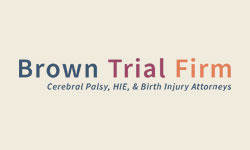In this post, you will learn about the three stages of hypoxic-ischemic encephalopathy, also known as HIE. If you are trying to understand HIE and what a diagnosis of a Stage I, Stage II, or Stage III HIE diagnosis means for a loved one, you’ve come to the right place.
This information has been curated from sourced for trusted government, medical, and non-profit sources.
Read on to learn more about the three stages of HIE.
The Sarnat Clinical Stages of HIE
In 1976, Sarnat and Sarnat were working on developing a clinical ranking system to help improve the diagnosis of hypoxic-ischemic encephalopathy. HIE is a serious form of birth asphyxia (or oxygen deprivation) that can cause brain damage, disability, and death. Children with HIE are at higher risk for other permanent conditions, including Cerebral Palsy.
These doctors proposed a three stage system for classifying HIE.
Stage I: describes conditions of mild HIE.
Stage II: describes conditions of moderate to severe HIE.
Stage III: describes conditions of severe HIE.
Stage I
In Stage I, or mild cases of HIE, the infant’s symptoms right after birth include:
- Hyperalertness from the infant
- Slightly decreased muscle tone (floppy muscles)
- Brisk deep tendon reflexes (e.g. a knee-jerk reaction doctors test for)
- Fussiness
- Difficulty feeding
- Trouble sleeping
- Frequent crying
Often, these symptoms will disappear within less than 24 hours from the child being born. However, all symptoms of HIE should be carefully monitored and treated appropriately.
Stage II
In Stage II, or moderate to severe HIE, the infant may show symptoms of:
- Unusual lethargy
- Significant hypotonia
- Lower deep tendon reflexes (less reaction to reflex stimulus)
- Difficulty grasping with the hands
- Moro Reflex (the feeling of suddenly falling, some people experience this right as they fall asleep–a baby will react to this sensation by shooting their arms out and may even gasp)
- Disinterest in sucking
- Trouble breathing, or apnea (a momentary cessation of breathing)
- Seizures
In moderate to severe HIE, it is very important that the child is properly monitored and treated. Effective medical care may significantly reduce the child’s prognosis. The first several weeks are the most critical period for monitoring and treating a child with Stage II HIE.
Many of the causes of HIE are entirely preventable with careful monitoring and quick treatment. It’s a sad reality that medical mistakes and doctor negligence are common causes of HIE.
Stage III
In Stage III, or severe cases of HIE, the symptoms may include:
- An unresponsive, coma like stupor
- No response to physical stimulus
- Extreme difficulty breathing
- Generalized hypotonia (floppy muscles over the whole body)
- Depressed deep tendon reflexes
- No neonatal reflexes (sucking, swallowing, grasping, Moro)
- Vision problems
- Dilated, fixed, or unresponsive pupils
- Delayed seizures (increasing after 24 – 48 hours, resistant to treatment)
- Irregular heart beat
- Poor blood pressure
Again, proper monitoring and treatment of Stage I severe cases of HIE is fundamental to improving the child’s condition. Severe cases of HIE may cause permanent injury or even death. It is the medical professionals’ duty to carefully watch the baby’s symptoms as they develop and to respond to symptoms of HIE with an effective treatment plan.
If a medical professional observes symptoms of HIE, they may wish to order testing, including using a magnetic resonance imaging machine (or MRI) to examine the child for damaged brain cells.
Intervention within the first few hours, days, and weeks following birth is critical. Receiving appropriate medical care in a Neonatal Intensive Care Unit (or NICU) may significantly improve the condition of the infant, reduce further complications, and minimize related injuries.
Learn more about Hypoxic-Ischemic Encephalopathy
HIE Malpractice Lawsuit
The child’s HIE and CP were caused by hypoxia and ischemia when the umbilical cord wrapped around the child’s neck, preventing the child from getting enough oxygen. The medical providers did not identify the warning signs and did not order a timely c-section. The delay caused severe and permanent injuries.
Sources
Sarnat HB, Sarnat MS. Neonatal encephalopathy following fetal distress. A clinical and electroencephalographic study. Arch Neurol. 1976 Oct. 33(10):696-705.
Hypoxic-Ischemic Encephalopathy Clinical Presentation: History, Physical Examination. (2019). Emedicine.medscape.com. Retrieved 5 November 2019, from https://emedicine.medscape.com/article/973501-clinical#b2
Contact a Cerebral Palsy and Birth Injury Attorney
Getting help for a child with a birth injury can make a big difference. Because early intervention is often key to helping improve a child’s wellbeing, it’s important to act swiftly.
If you have questions about whether your child’s birth injury was caused by a preventable medical error, then our attorneys at Brown Trial Firm may be able to help.
Did your newborn suffer from brain damage
due to a lack of oxygen at birth?
Talk to a birth injury attorney who has dedicated her entire career to these types of cases.



